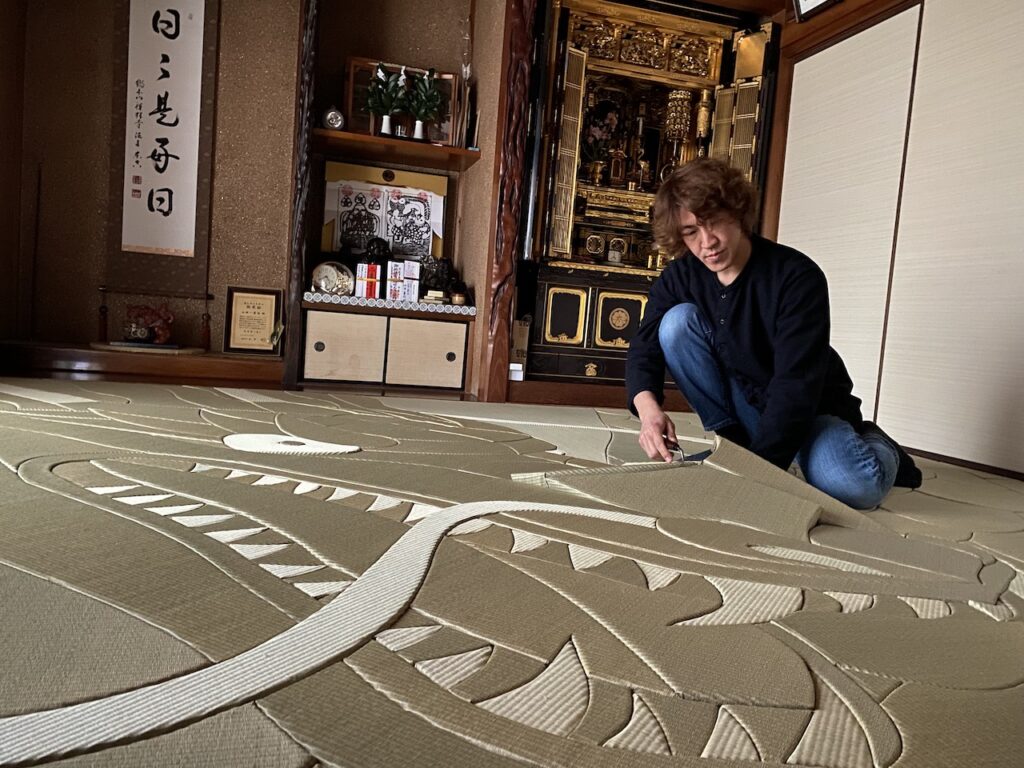



DUBAI: Kenzie Yamada, a fifth-generation tatami artist, took over his family business a century after it was established in hopes of bringing a modernized new look to the traditional craft.
Tatami are square-shaped soft floor mats that are used in traditional Japanese houses. Yamada’s family business began during the Meiji period, a time when tatami mats reflected luxury and high status.
Born in Gifu Prefecture, Yamada didn’t want to take over the family business due to the lack of demand for tatami mats nowadays. One day, his friend requested an irregular form of tatami, which made him think about approaching the 1300-year tradition differently.
“I started working in an architecture firm after graduating university. I wanted to quit to start my own architecture company but when my friend contacted me out of nowhere, it made me think about tatami,” he told Arab News Japan.

“I wasn’t planning on taking the family business because I didn’t realize that tatami can be a different shape but then I realized I could make something interesting. Of course, because of my background in architecture, I felt like I could incorporate my designs and create a new project,” he added.
Yamada approaches tatami making not just from an architectural perspective but also from an artistic one. He uses a raw form of tatami in one color but manipulates the angle to make the mat change colors.
Before approaching any project, the artist visits and studies the location extensively to know how to manipulate the light and shadows to create the masterpiece he has in mind. This technique gives a distinct look to his works based on the season and time of day.
“The light changes from morning to evening and from summer to winter, but with my experience and also a good range of assumptions, it doesn’t go anything too far from what I expected,” he shared.

One of Yamada’s most memorable works is a piece that includes two birds that change colors throughout the day. He uses the exterior to add a new dimension to his work that immerses guests.
“It took about one year to create,” he told Arab News Japan. “What I wanted from this project was not only to use the reflection of light in the tatami but I also wanted to combine the art installation with the exterior view. The birds are an extension of the place. The installation erases the boundaries between interior and exterior spaces.”
“In the late afternoon, the bird’s feather looks more golden but in the early daytime it looks more silver. With the morning light, the beak of the bird becomes white and the tatami mattress has a softer look,” he added.

Yamada’s other works include installations of animals and portraits. “My inspiration comes from an architectural point of view,” he said. “I’m always thinking about space and the point of view of people entering the room.”
While the Japanese artist is aware of the decline of the tatami industry, he is committed to globalizing the traditional art and introducing it to different parts of the world.
“The tatami industry is shrinking mainly because the new Japanese residential projects are catering more to a Western style of design. Tatami is a hidden gem of Japan and it’s very challenging to break into international markets because, unless someone is aware of Japanese culture, they don’t even know about tatami or have never even touched it,” he said.
“By utilizing some art or design perspective, there must be a way to introduce tatami to the rest of the world. Tatami can be different shapes and specifications so I want tatami to be more in demand where it can meet the current customer’s needs,” he added.

Yamada has never exhibited in the GCC region, but he has visited Dubai as a tourist and was impressed by its architectural beauty.
“I’m aware of all the architectural projects happening (in Dubai, Abu Dhabi, and Saudi Arabia). I was really impressed with the Burj Khalifa when I visited. If there is a chance to exhibit in this part of the world and showcase the beauty of tatami, I would be honored,” the artist said.
His upcoming projects include an exhibition in Nagoya that will open in January as well as a pop-up with a French artist. His work can be accessed on his website.